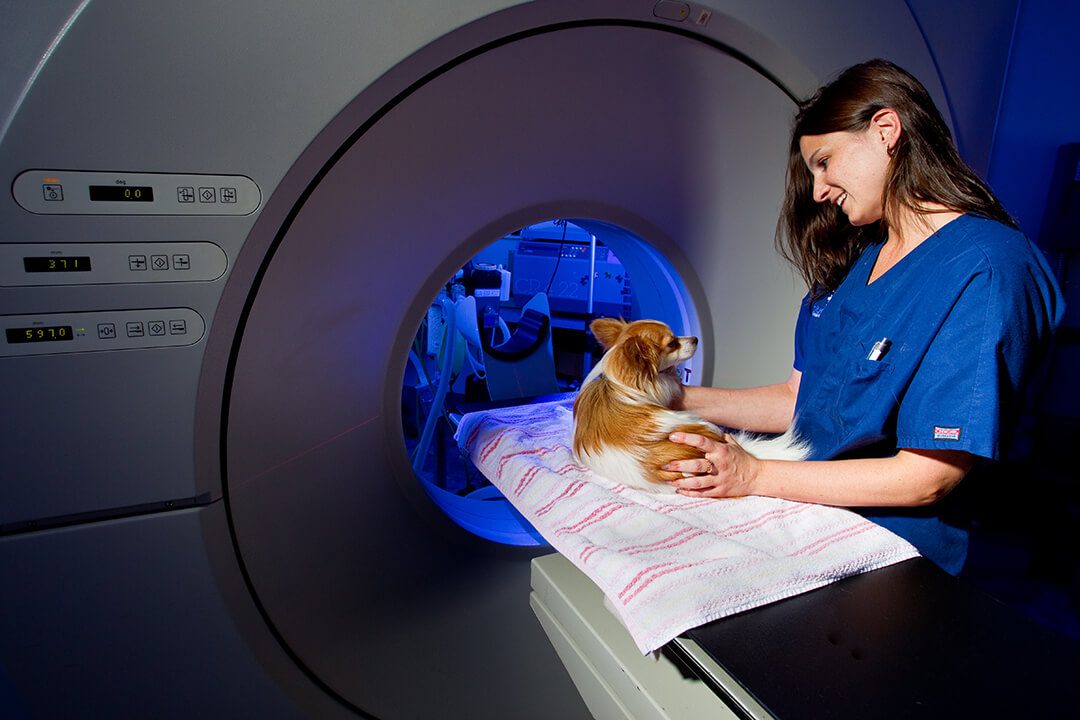Immune-mediated polyarthritis: Diagnosis and treatment.
Polyarthritis refers to multiple inflamed, swollen and painful joints. This pain will often cause pets to be reluctant to walk or may cause limping on one or more legs.
Immune-mediated polyarthritis refers to an abnormal immune response by the body directed at the joints. This abnormal immune response may be caused either by an infection (less common) or an auto-immune response by the body against its own joint tissues (more common).
Signs and symptoms.
Both types can present with fever, but it is important to differentiate between the two types because the treatment is very different.
When immune-mediated polyarthritis is caused by an infection in the body, the infection is usually not in the joints themselves but somewhere else in the body. Minor or superficial infections in the body do not usually cause this disease.
The presence of inflamed joints resulting from an infection elsewhere in the body is similar to having “achy joints” in the presence of influenza (the flu). In this example, the flu virus attacks various tissues in the body, and while the body’s immune system is fighting off the infection, the immune system indirectly attacks the joints making them sore and inflamed.
Diagnosis.
Typical tests to find a potential source of an internal infection include a through physical examination and comprehensive laboratory tests including blood and urine tests and urine culture.
More advanced testing may be indicated depending on the specific case and may include radiographs (x-rays) of the body and legs, abdominal and or cardiac ultrasound, and other more specific blood tests for infectious diseases such as tick-borne diseases.
Joint taps are often required to collect a sample of the fluid within the joints. These will be submitted to a laboratory for bacterial culture, which looks for the presence of a bacterial infection, and for cytology, which lets the doctor know what kinds of cells are in the joint fluid. A small needle will be placed into the joints after your pet has been anesthetized and the sample is collected. Usually multiple joints will be tapped.
If the blood tests, urine and joint cultures, and joint taps do not reveal evidence of infection, then the condition is termed “autoimmune” polyarthritis.
An autoimmune disease is one in which the body’s own immune system has malfunctioned and begins to attack parts of the body, in this case the joints. In autoimmune polyarthritis, the attack is against the lining of the joints. The reason for this misdirected attack is not clear. A particularly debilitating form of this disease, rheumatoid arthritis, typically affects aging, smaller and toy breeds. Autoimmune polyarthritis may occur alone or may be part of an attack on multiple organs or tissues within the body, such as systemic lupus.
Treatment.
Treatment for an infectious (bacterial) polyarthritis involves antibiotic therapy. Treatment for immune-mediated polyarthritis involves the use of a single drug or multiple drugs to “turn off” or suppress the immune system. The drug most commonly used for immune-mediated polyarthritis is a corticosteroid hormone called prednisone.
Side effects of this drug include an  increased appetite, increased thirst, increased urination and increased anxiety, most often seen as pacing, panting and restlessness.
increased appetite, increased thirst, increased urination and increased anxiety, most often seen as pacing, panting and restlessness.
The signs are worse at the initial high doses but will lessen as the dose is slowly decreased over time. If prednisone alone does not adequately suppress the immune system, other immunosuppressive drugs can also be added to the treatment protocol.
Physical examinations and blood work will be required on a periodic basis to monitor for any adverse side effects to these medications as well as response to therapy. These frequent rechecks are extremely important.
If the immune system has been adequately suppressed, the dosage of medications can be slowly tapered, often over the course of several months.
The goal is to find the lowest dose of medication that manages the disease; or in some instances, medications can be discontinued altogether. Medications should never be tapered without the instruction of your veterinarian.
Prognosis.
The prognosis is highly variable and depends on whether an underlying cause for the polyarthritis can be found or if complications related to the disease or drug therapy occur. Relapses can occur months to years after the initial episode.


